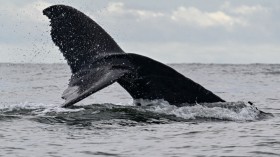Scientists say they have developed a new way to slow the rate at which light travels that could one day lead to new technologies in remote sensing and measurement science.
While researchers have long known that a wave packet of light moves slower when traveling through matter, the magnitude of this slowdown in common materials such as glass or water is less than a factor of two with other research groups relying on complex manipulations of the properties of atomic vapors or crystal lattices to further increase this number.
However, in the new technique presented both in the journal Optics Express and Optics Letters, an international team of scientists opted instead for a liquid crystal similar to the materials found in LCD televisions and computer displays. The resulting setup is a simple one, requiring no external voltages or magnetic fields and capable of working at room temperature and with low optical power.
They then added a chemical component that twists the liquid crystal molecules into a helical shape as well as dye molecules that nestled down inside these structures. Because dye molecules change their shape when irradiated by light, the optical properties of the material was altered, resulting in a change in the relative velocities of the light pulse's wave components as it traveled through.
All told, the researchers were able to decrease the group velocity of light back to less than one-billionth of its top speed.
Furthermore, this helical structure ensures an extended lifetime of the shape-shifted dyes, allowing for the possibility of storing a light pulse in the medium and then releasing it later on demand.
The ability to slow down light is key in allowing researchers to compare the characteristics of different light pulses. Doing so, says one of the study's authors Umberto Bortolozzo, can open the door to building highly sensitive instruments capable of measuring extremely slow speeds and the tiniest of movements.
And while the new technique has little application in the field of slowing and storing light pulses for the purpose of optical communications, Bortolozzo says it is apt for sensing and interferometry applications.
Going forward, the researcher says the team plans on testing their approach in similar phase sensing applications as well as possibly extend the work to other molecular arrangements and types of dye.
"Realizing slow and stopped light in these media is very exciting both for the fundamental research that discovers such new effects in soft matter systems," Bortolozzo said, "and for the new possibilities that these investigations could open in the fields of remote sensing and optical storage."
© 2024 NatureWorldNews.com All rights reserved. Do not reproduce without permission.





